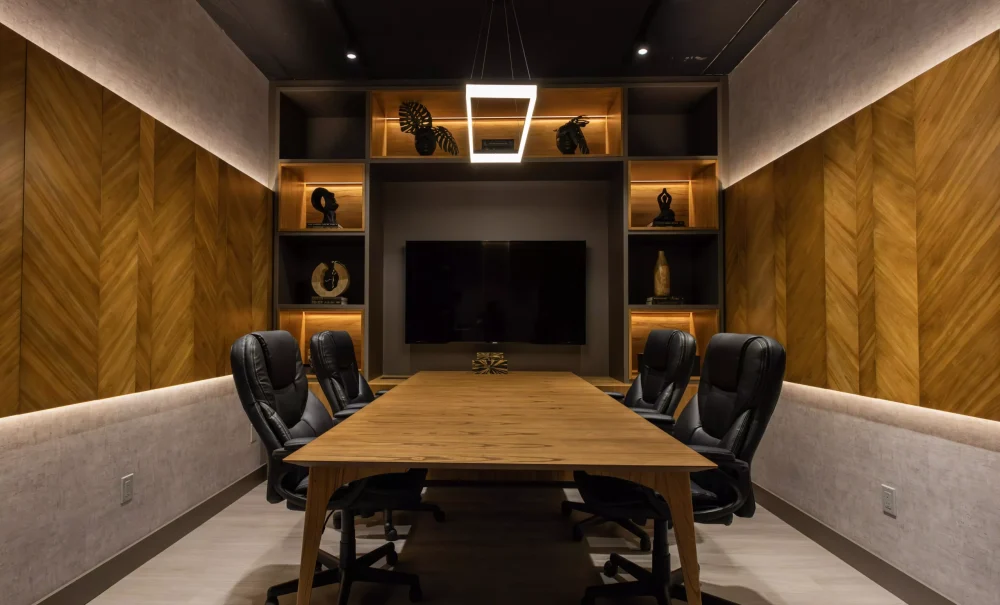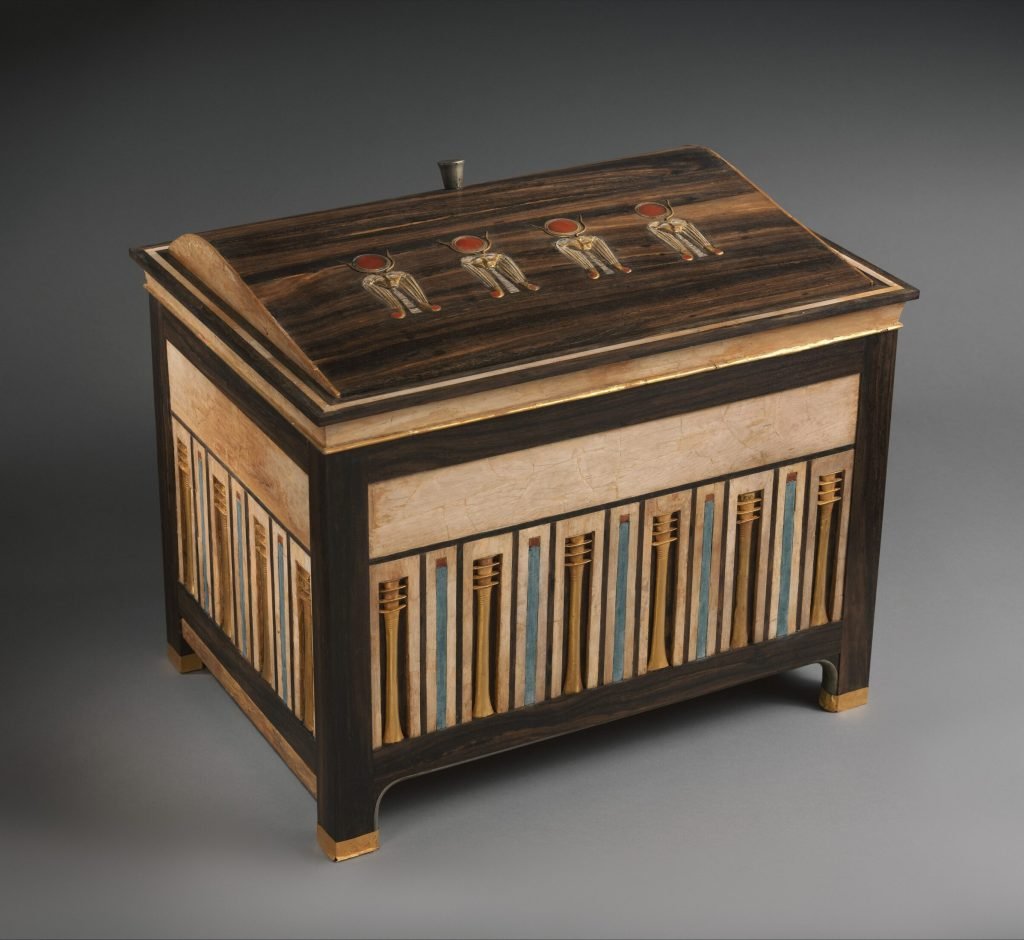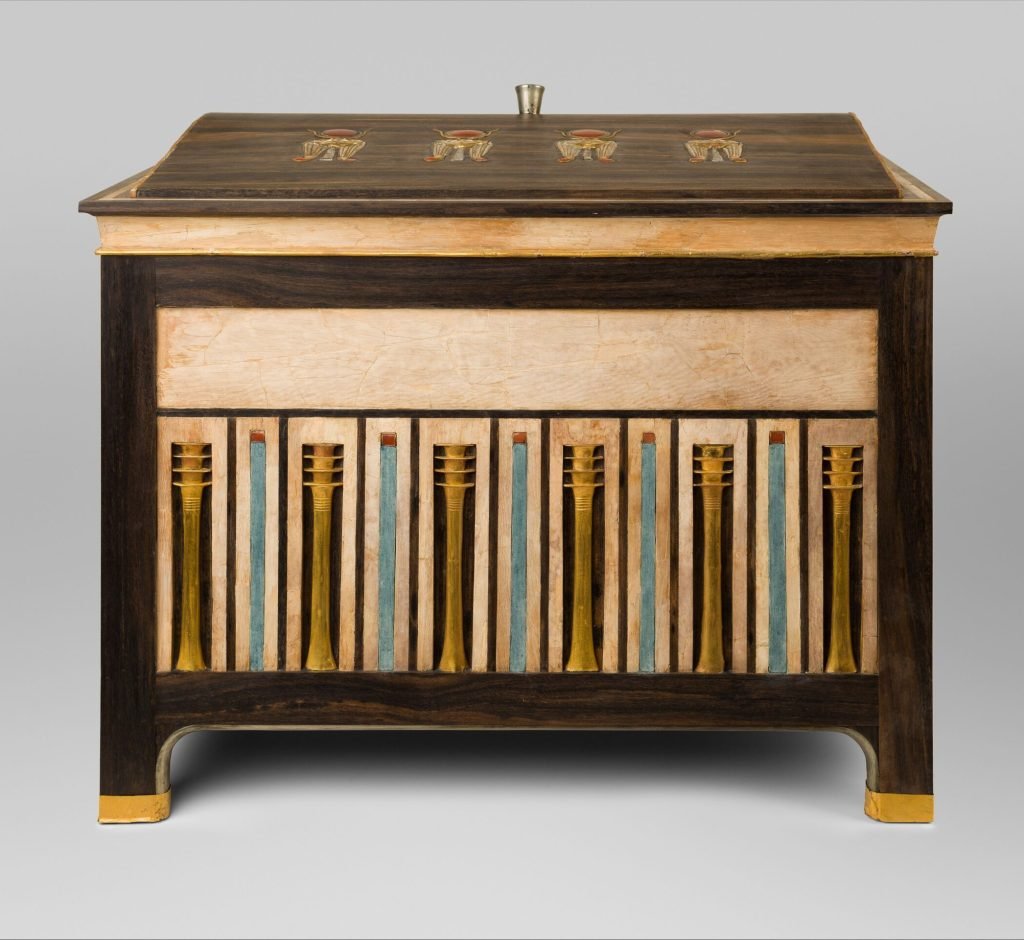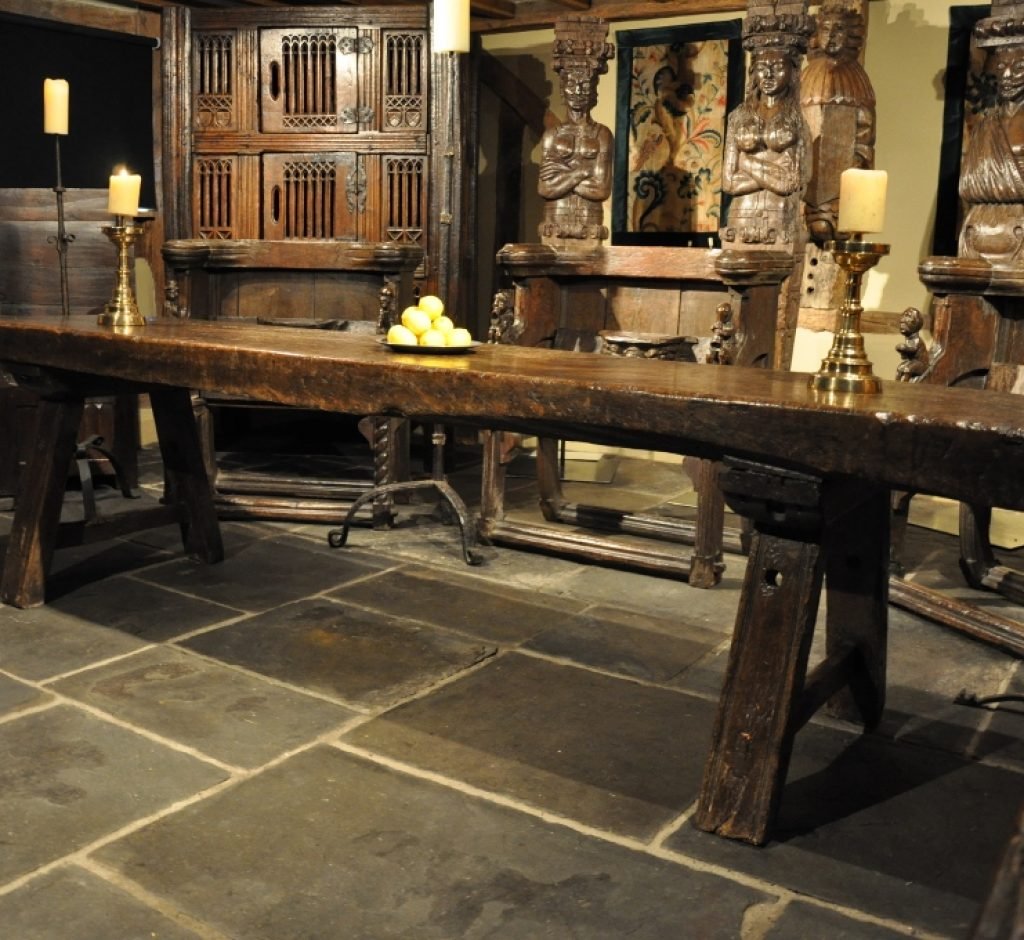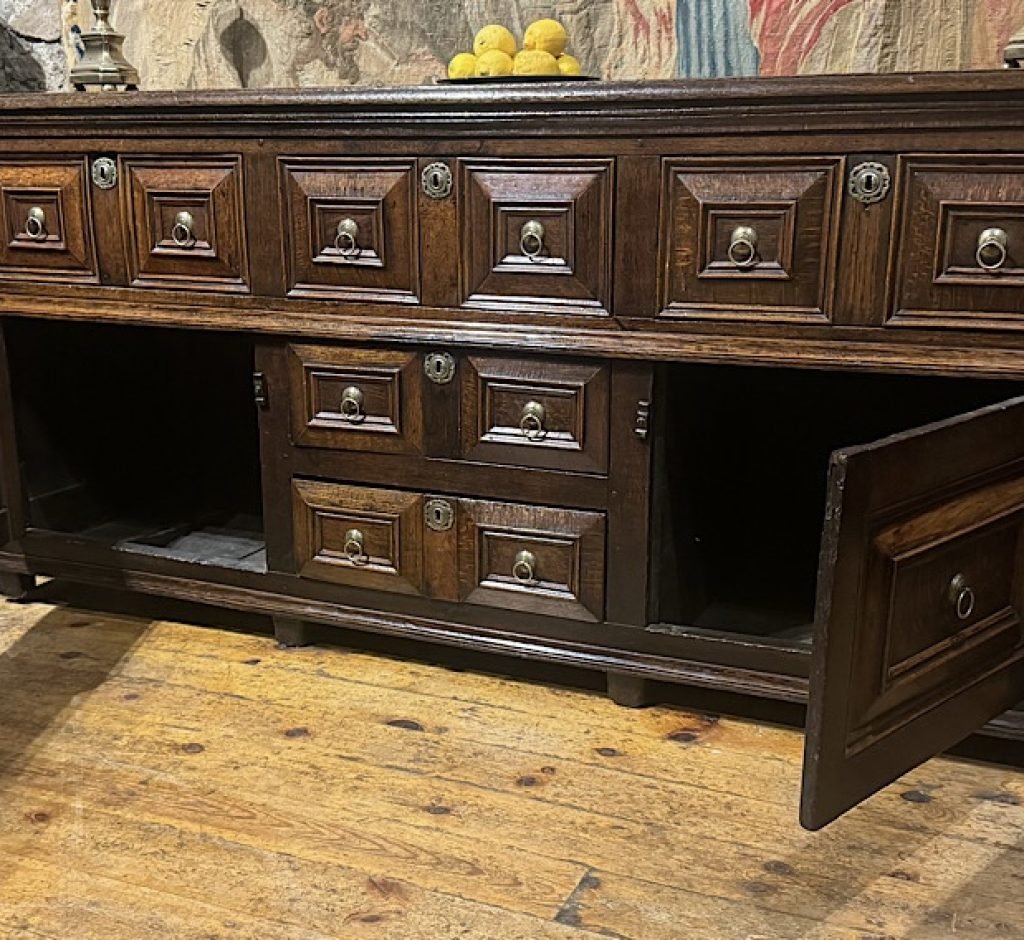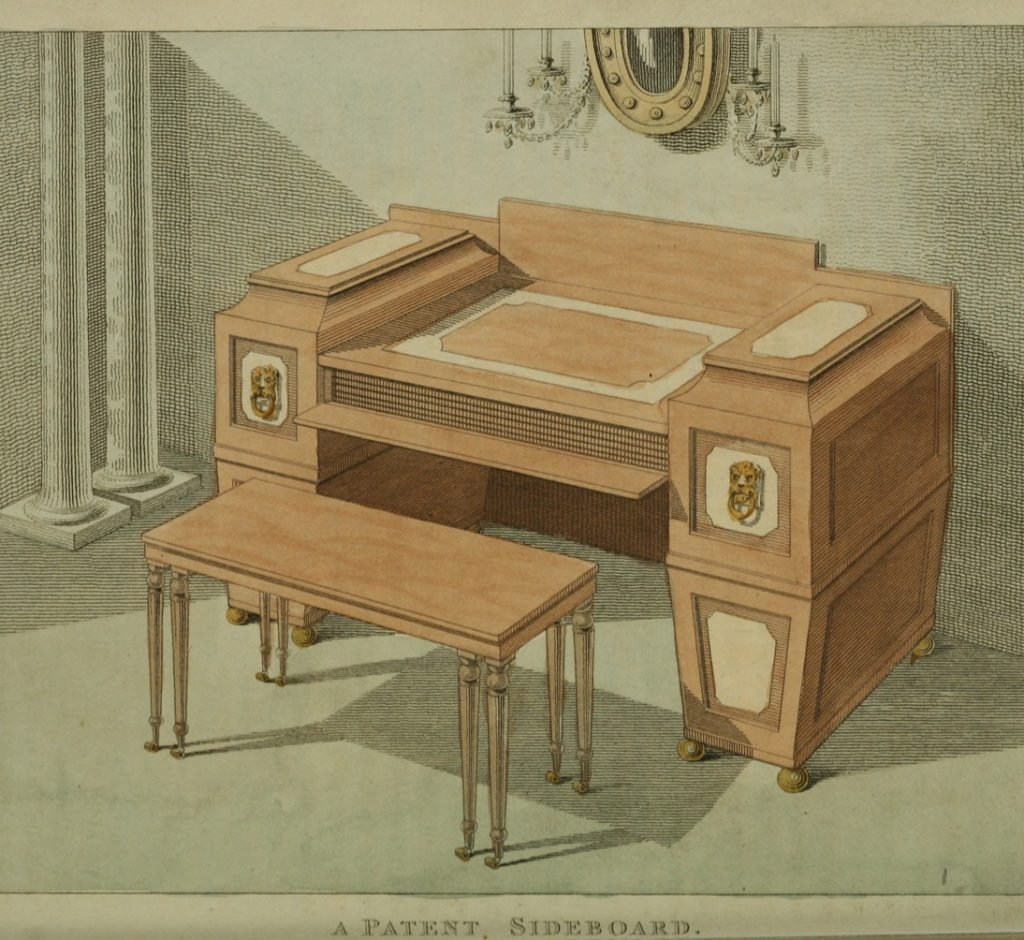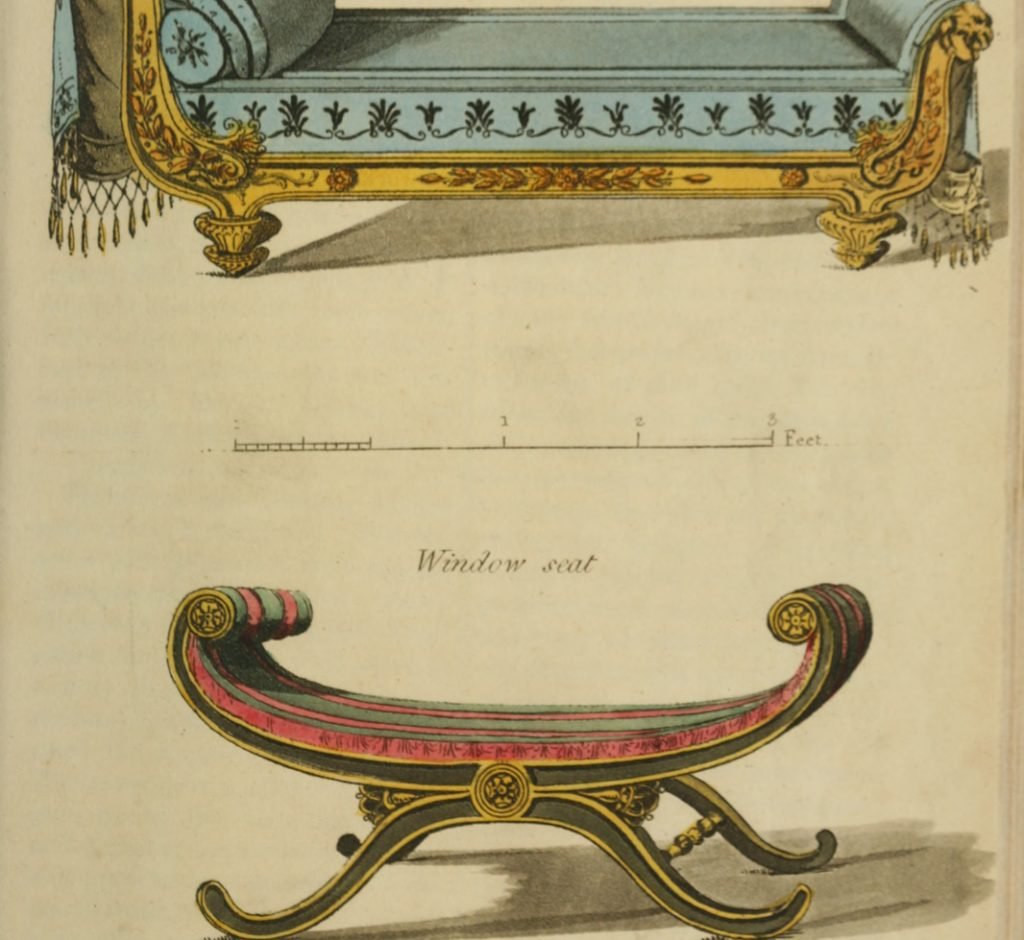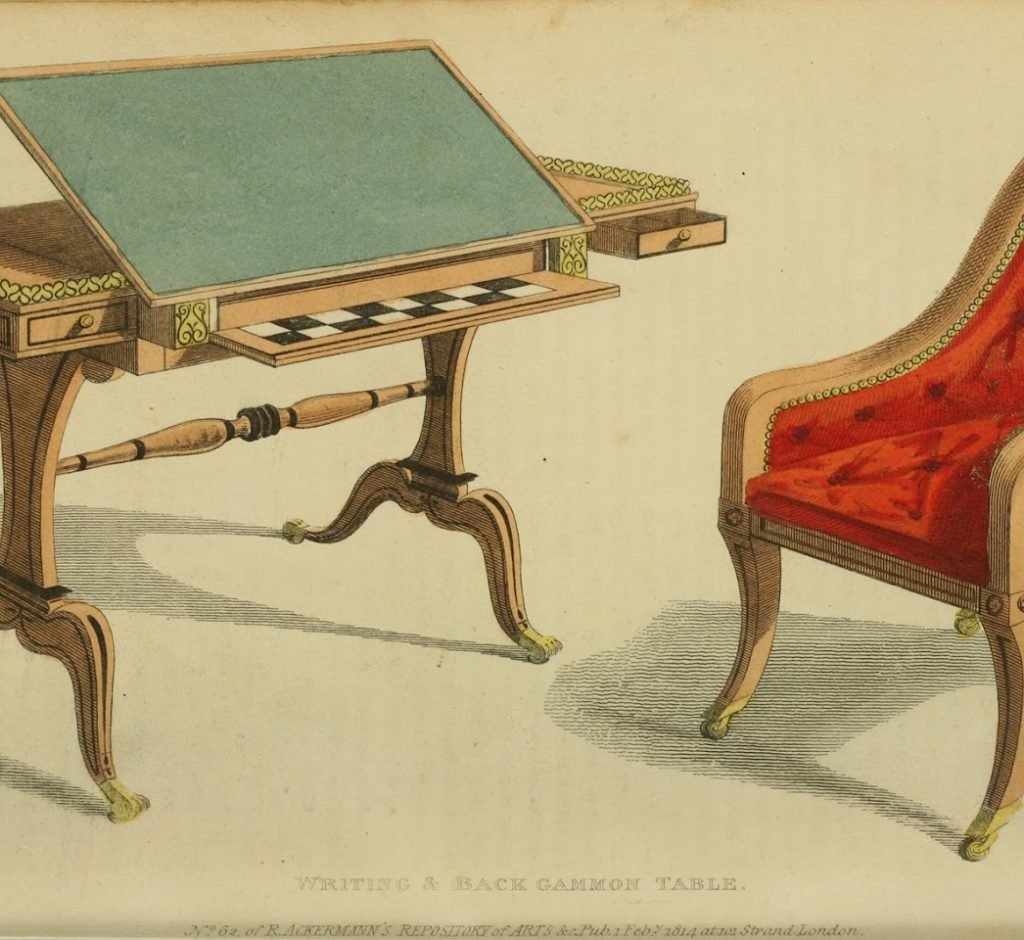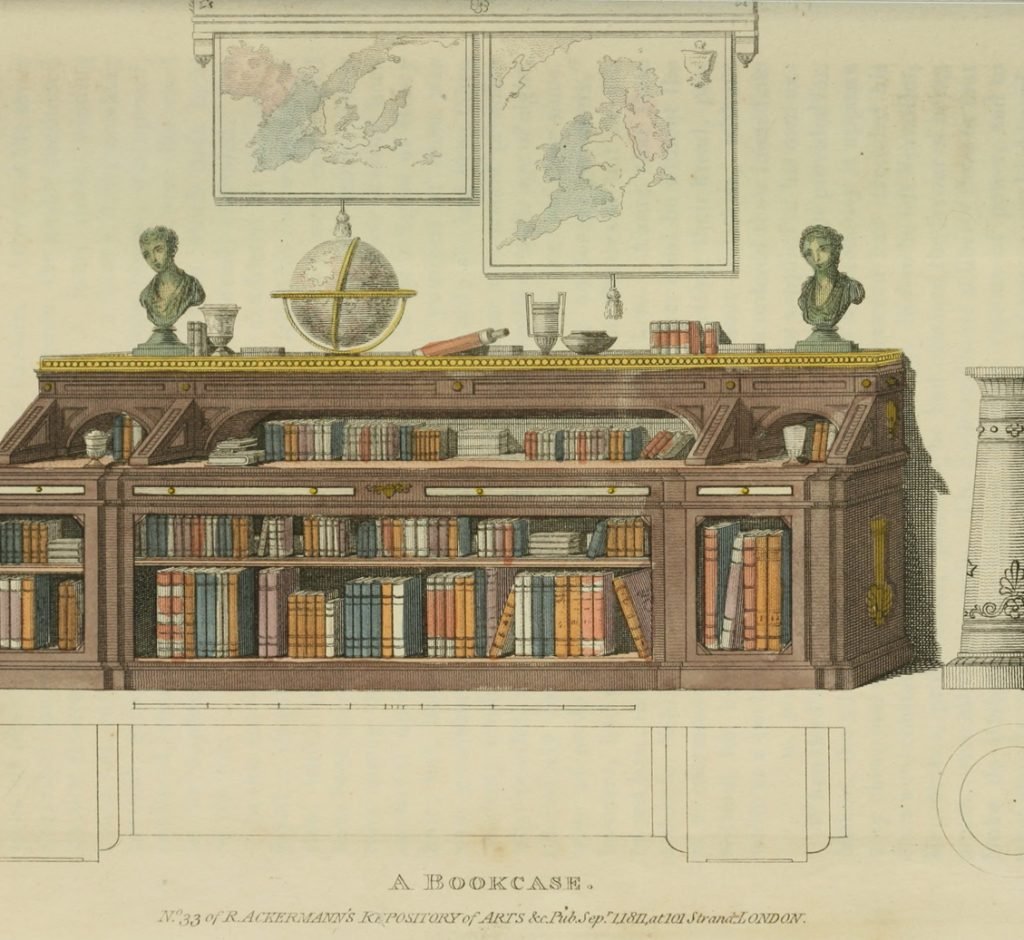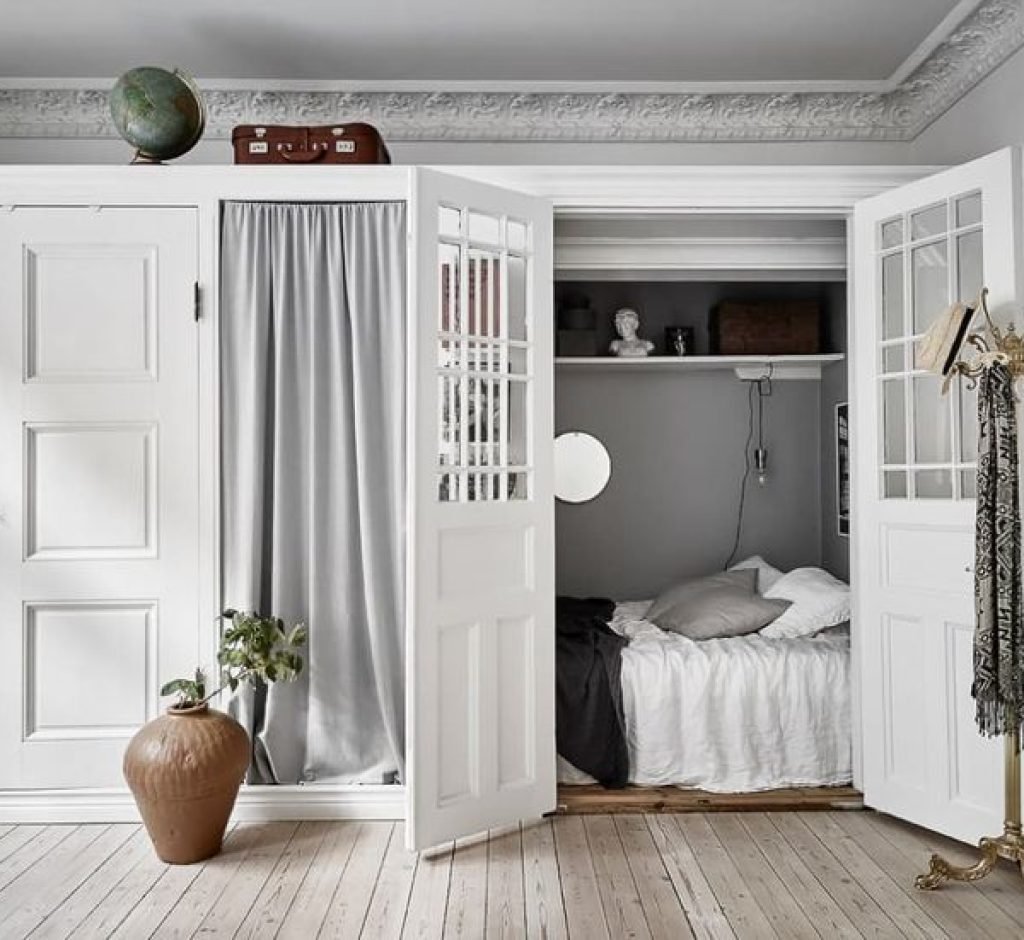- USA
- PT
- ES
Historical Influences on Modern Furniture Design
When we research the origin of furniture making by humanity, such as cabinets and beds, we see that this activity is almost as old as humanity itself. What we see is that humanity has always needed furniture, and for that, they used simple materials like wood and stones, up to the more sophisticated ones like ivory and gold. Over the centuries and with the emergence of new techniques and tools that facilitated assembly, furniture ceased to be luxury items and became more accessible to more people.
Ancient Civilizations
Thanks to archaeology, we know that since ancient times, people were concerned with creating items to store everyday goods such as food, clothes, and jewelry, among others. Although direct evidence of ancient wooden furniture is rare, due to the perishable nature of wood over millennia, archaeological excavations have revealed remnants of wooden furniture, such as fragments of chests and boxes, in royal tombs and urban centers. Ancient nomadic peoples of Sumer used ceramic vases and urns, but few traces remain of wooden storage pieces.
The Egyptians, who belonged to the elite, had chests, urns, and beds made of acacia and cedar, and the more fortunate, like princes and pharaohs, had access to ivory, limestone, and even gold for their furniture. Since woodworking was done through scarce cutting and carving tools, most of the population did not have these ancient furniture pieces to store and adorn their homes, only those who mastered metallurgy could manufacture such tools.
Later, the Greeks used woods like olive, oak, and cedar to build wooden chests and sofas, but again, sophisticated cabinets as we know them were uncommon. Storage was often integrated into other types of furniture. Similar to the Greeks, the Romans used a variety of woods, including beech, maple, and pine. Although not very usual, these two peoples were also known for their works in marble, limestone, and ivory.
Medieval Era
During the medieval period, furniture was generally functional and robust, reflecting the austere and rustic lifestyle of the time. Wood was the main material for furniture, with common types including oak, walnut, and chestnut. Carpentry was relatively simple, relying on stakes, pegs, and mortise-and-tenon joints. Nails and iron straps, much more common in this period than in antiquity, were also used.
Furniture during this period began to become more varied. Chests were essential for storage and often used as seats. Decorated chests, like coffers, were common among wealthier families. Tables became more frequent, usually trestle tables that could be dismantled for storage. Benches were more common than chairs, often reserved for the head of the family or guests. The “settle,” a wooden bench with a backrest and high arms, became increasingly popular. Beds were introduced later in the period, with the earliest beds being simple structures with straw mattresses.
A curious furniture in this period was the Box beds. Also known as enclosed or cupboard beds, were a distinctive type of furniture common in the medieval period, particularly in Europe. These beds were designed to provide warmth, privacy, and security in the often drafty and communal living spaces of medieval homes. Box beds were a practical and culturally significant piece of medieval furniture, designed to address the challenges of living in cold, communal spaces. Their enclosed structure provided warmth, privacy, and security, making them a valuable addition to medieval households. Over time, the design of box beds evolved, reflecting both the functional needs and the social status of their owners. These beds remain an interesting example of how medieval people adapted their living environments to improve comfort and quality of life.
Renaissance Era
The Renaissance period was marked by a significant cultural and commercial exchange between peoples, leading to a revival of classical arts and craftsmanship, introducing new raw materials, more elaborate designs, advanced woodworking, and rich decorations. This gave rise to a new emphasis on beauty, skill, and furniture design, laying the foundations for modern furniture styles. Wood increasingly became the primary material, with a greater variety including walnut, mahogany, and ebony. Enhanced woodworking techniques included dovetail joints and complex inlays.
Furniture featured intricate carvings in classical patterns, floral designs, and biblical scenes. Inlays of ivory, bone, and mother-of-pearl were common. Luxurious decoration with paint, gold leaf, and other embellishments reflected the owner’s wealth and taste. The art of inlaying different woods to create intricate patterns and scenes became popular.
The Renaissance saw the introduction of cabinets for storage, often elaborately decorated, and cabinets with “feet” became common.
Tables began to have more varied designs, including fixed tables with carved legs and intricate inlays. “Refectory tables” became popular for dining.
Chairs also became more common and with varied designs. The “Savonarola chair,” a folding chair with an X-shaped frame, and the “Dante chair,” a curule chair with a cushioned seat, were popular. Canopy beds became more ornate, with carved headboards, canopies, and rich fabrics.
Early American Furniture in the 17th Century Colonial Days
Early American furniture from the 17th century Colonial days reflects the pragmatic and austere lifestyle of the settlers. This period, spanning roughly from the early 1600s to the late 1600s, saw the establishment of the first permanent English colonies in North America, where furniture design was heavily influenced by European, particularly English, styles but adapted to the needs and resources of the New World.
As the 17th century progressed, the furniture in Colonial America began to reflect a blend of practicality and emerging decorative arts. While simplicity remained a hallmark, more affluent settlers began to commission pieces that showcased modest embellishments and craftsmanship. These included turned spindles, which added a touch of elegance to bed frames and chairs, and paneling that broke up the plain surfaces of chests and cupboards. Furniture pieces like the “Hadley chest,” often decorated with chip carving, paint, and inlays, began to appear, indicating a growing desire for ornamentation even within the constraints of colonial life. This period also saw the introduction of more specialized furniture, such as the “Bible box” or small writing desks, which indicated a society placing increasing importance on literacy and record-keeping. These developments in early American furniture reflected a society in transition, balancing the rigors of frontier life with the cultural aspirations and refinements of their European heritage.
19th Century (Victorian and Arts and Crafts Movements)
The 19th century was a period of eclecticism and innovation in furniture design, marked by the Victorian and Arts and Crafts movements. The Victorian era, with its fascination for a mix of Gothic, Rococo, and Renaissance styles, produced furniture that was highly ornate, heavily upholstered, and often featured dark woods such as mahogany and rosewood. Victorian furniture was characterized by intricate carvings, button-tufting, and the use of rich fabrics like velvet and brocade, reflecting the era’s penchant for grandeur and decoration. In contrast, the Arts and Crafts movement emerged as a reaction against industrialization and mass production, promoting simple, handcrafted furniture made from native woods like oak. This movement emphasized visible joinery, natural motifs, and honest craftsmanship, aiming to bring a sense of integrity and artistry back to everyday objects. Together, these contrasting styles of the 19th century highlight the diverse and evolving tastes in furniture design, from the ornate and eclectic to the simple and handcrafted.
Modern Era (20th and 21st Centuries)
The modern era of furniture design, spanning the 20th and 21st centuries, is marked by a radical shift towards simplicity, functionality, and innovation. Early 20th-century movements such as Bauhaus and Modernism introduced minimalist aesthetics, emphasizing clean lines, geometric forms, and the use of new materials like steel, glass, and molded plywood. Designers like Le Corbusier, Marcel Breuer, and Charles and Ray Eames championed the idea that form should follow function, creating iconic pieces such as the LC4 chaise lounge and the Eames Lounge Chair. These designs reflected the era’s focus on mass production, accessibility, and the blending of art with industry, moving away from the ornate and handcrafted traditions of the past.
In the late 20th and early 21st centuries, furniture design has continued to evolve, embracing technological advancements and sustainability. The rise of postmodernism brought a playful and eclectic approach, with designers like Philippe Starck and Ettore Sottsass challenging conventional norms with bold colors, unconventional shapes, and a mix of historical references. Contemporary design today often focuses on sustainability and ethical production, utilizing recycled materials and promoting longevity and environmental responsibility. Innovations in technology, such as 3D printing and smart furniture, have opened new possibilities for customization and functionality. This era reflects a globalized world where diverse influences merge, and design prioritizes adaptability, sustainability, and the integration of technology into everyday life.
Latest Posts
Category
Do You Have Any Questions?
Feel free to reach out to us! For any inquiries or assistance, don’t hesitate to contact us:
- (689) 258-9440
- contact@difratelliusa.com
- Operating Hours: 9:00 am to 5:00 pm
- Showroom Address: 3701 John Young Pkwy #105 Orlando, Florida
- Free Design Consultation

Where beauty and functionality meet. Welcome to an exceptional custom cabinet experience in Orlando, Florida.
Difratelli USA
Copyright © 2023. All Rights Reserved.




